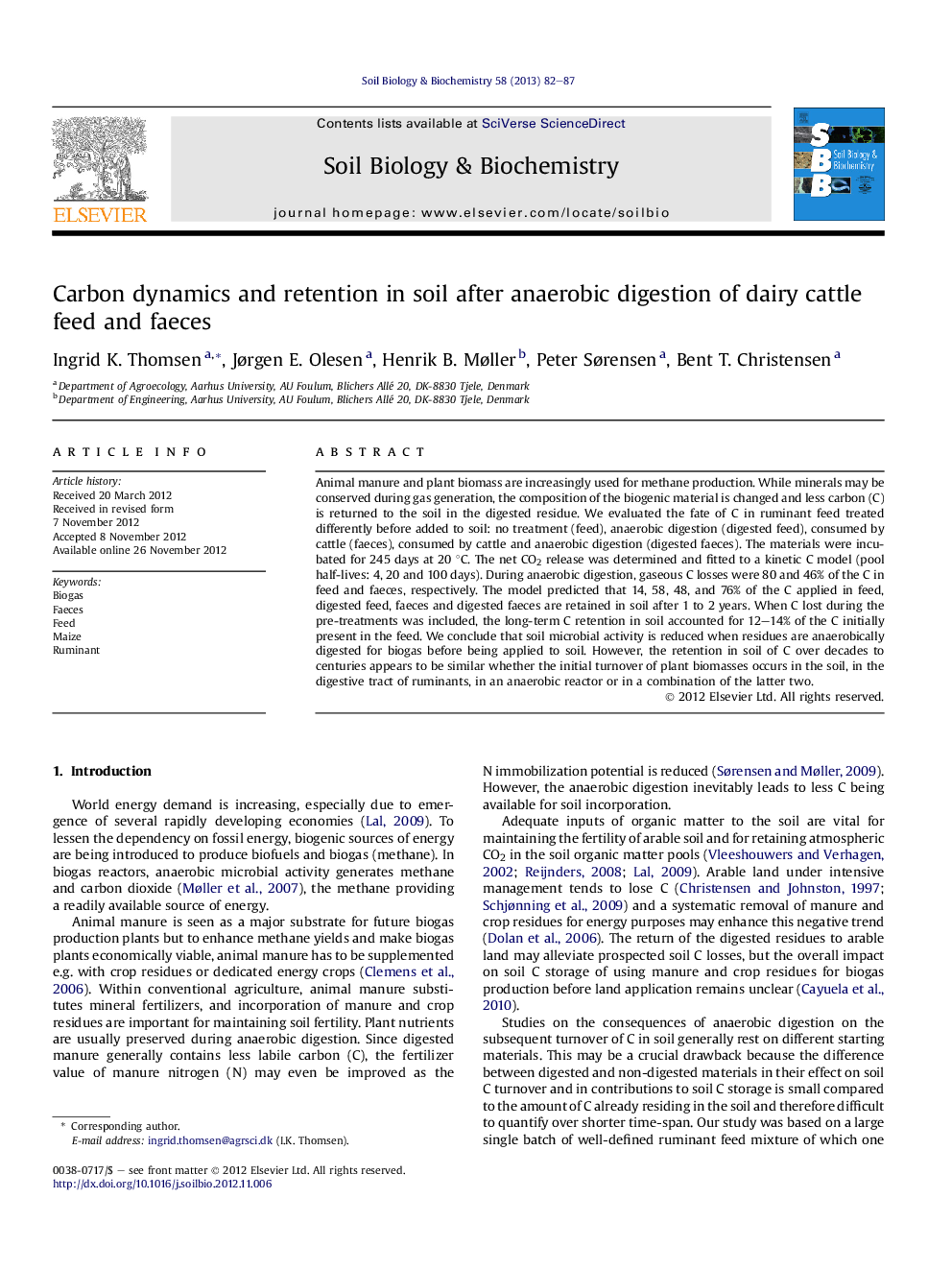| Article ID | Journal | Published Year | Pages | File Type |
|---|---|---|---|---|
| 2024872 | Soil Biology and Biochemistry | 2013 | 6 Pages |
Animal manure and plant biomass are increasingly used for methane production. While minerals may be conserved during gas generation, the composition of the biogenic material is changed and less carbon (C) is returned to the soil in the digested residue. We evaluated the fate of C in ruminant feed treated differently before added to soil: no treatment (feed), anaerobic digestion (digested feed), consumed by cattle (faeces), consumed by cattle and anaerobic digestion (digested faeces). The materials were incubated for 245 days at 20 °C. The net CO2 release was determined and fitted to a kinetic C model (pool half-lives: 4, 20 and 100 days). During anaerobic digestion, gaseous C losses were 80 and 46% of the C in feed and faeces, respectively. The model predicted that 14, 58, 48, and 76% of the C applied in feed, digested feed, faeces and digested faeces are retained in soil after 1 to 2 years. When C lost during the pre-treatments was included, the long-term C retention in soil accounted for 12–14% of the C initially present in the feed. We conclude that soil microbial activity is reduced when residues are anaerobically digested for biogas before being applied to soil. However, the retention in soil of C over decades to centuries appears to be similar whether the initial turnover of plant biomasses occurs in the soil, in the digestive tract of ruminants, in an anaerobic reactor or in a combination of the latter two.
► Fresh and digested feed and faeces of same origin were incubated in soil. ► Feed and faeces lost 80% and 46% of the C during the anaerobic digestion. ► Non-digested materials lost twice as much C from soil as the digested counterparts. ► On a long-term scale a similar fraction of C is retained in the soil.
